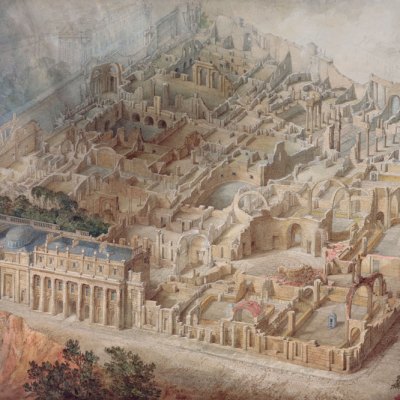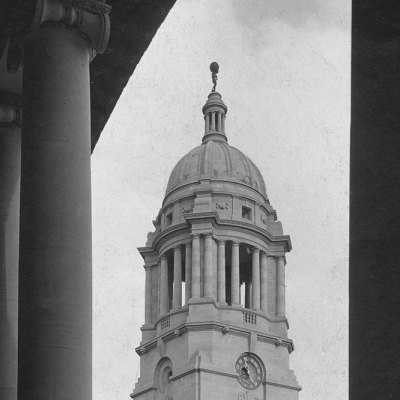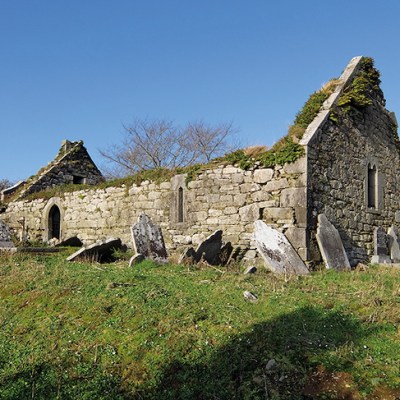From the February 2024 issue of Apollo. Preview and subscribe here.
Steven Brindle’s impressive new survey of British architecture from 1530–1830 begins with a crisis. ‘As far as architecture and the visual arts are concerned,’ he writes, ‘the Reformation can only be described as a colossal self-inflicted cultural catastrophe.’ It neutered Britain’s capacity as a centre for artistic production and, crucially for the book’s subject, destroyed its traditional systems of architectural patronage.
In many ways, the story that Brindle tells over the following pages is of the effects of this catastrophe and Britain’s recovery from it. For Brindle, this entailed the gradual disappearance of the craft-based system that had created the palaces and cathedrals of the Middle Ages and its replacement with a more standardised – and, one feels, in Brindle’s view more homogenised – method of classical-based design.
There are two principal actors in this story: paper and the figure of the architect. The role of paper was to disseminate knowledge widely throughout the country so that what had once been the preserve of exclusive guilds became accessible to those with the money to buy and the skill to read books. As print cheapened and literacy proliferated, these things were true of an ever-greater number of people. At the same time, the architect became a figure of increasing importance, rising from master mason – effectively the first among equals in the post-medieval team of artisans – to architect, a term with greater status and social cachet, to whom the craftspeople answered and were very much subordinate. Thus, it is fitting that the culminating moment of this process, the establishment of the Royal Institute of British Architects (RIBA) in 1834–35, should arrive in the book’s closing pages.
This book also tells the story of the rise of a whole new way of thinking about architecture in Britain. The buildings to which we are first introduced in its opening pages were worked out on-site by a team of craftspeople in a medieval method rather than being ‘designed’ in a modern sense. As such, they were conceived as syntheses that could be added to and subtracted from over time. This was eventually replaced with a Renaissance conception of architectural design, one in which buildings became ideas that could be entirely worked out on paper – even by those, such as Pugin, who claimed to be following gothic methods. Indeed, they didn’t need to be built at all, as the period’s many unbuilt idealised schemes attest.
Beautifully designed and generously illustrated with a superb array of high-quality images, many of them in colour, this book seeks, as its blurb states, ‘to become a definitive work of scholarship’ in a complicated field. It is not a project that its author sees as neutral: as he explains, ‘a society’s historic buildings are among its most precious collective possessions […] no work that purports to be a history of them should be indifferent to their fate’. Brindle believes that all the buildings of a country’s history, not just the ‘Grade Ones’ that were designed by elite, named architects, ought to be the subject of its architectural history. Domestic architecture plays as large a part in this book, for being as important a statement of a society’s economic and cultural trends, as prestige architecture.
Brindle intends this book to be understood against works by earlier writers on the subject, in particular that of John Summerson, the one-time director of Sir John Soane’s Museum. Summerson wrote the last survey of this period in British architecture – it is no coincidence that Brindle covers exactly the same range of dates – and it is with a discussion of Summerson’s volume that this book is both opened and closed. Brindle is explicit that he views his work as a corrective of Summerson’s earlier account, which he believes to be flawed. By seeking to write architectural history as art history, he argues, Summerson failed to take sufficient heed of the at times messy process by which buildings were born, requiring a longer timeframe and involving a far greater range of moving parts than did paintings, in the form of patrons, bricklayers, carpenters, stuccodores and the like. While the rise of the architect is one of the main themes of this book, great works by great architects are not foregrounded as the drivers of architectural change.
Brindle’s work benefits from the considerable amount of new scholarship that has been published over the 70 years since the first edition of Summerson’s survey was published in 1953. As he points out, the bibliography of Summerson’s book, whose final, ninth edition was published in 1991, never exceeded 300 volumes, whereas Brindle’s boasts an impressive 1,200. Yet by moving his focus from art history to what might be termed craft history, he effectively changes the terms of the debate and fails to tackle Summerson’s claims head on. Indeed, in his discussion of style we have much the same stately progression – from classical, to baroque, to Palladian, to neoclassical, to Gothic Revival – that is familiar from Summerson. Rarely are these terms deconstructed or subjected to proper scrutiny, and we are generally left in the dark as to why these stylistic shifts occurred. Rather than doing away with all the quirks of Summerson’s account, they can at times be found here in amplified form. Britain’s first Roman-trained architect James Gibbs, for instance, is still the outsider that he was in Summerson’s account, but is now uncomfortably paired with the provincial architect Francis Smith of Warwick.
Nonetheless, there is a great deal to admire in this account. If, taken as a whole, it does not quite become the textbook that it seeks to be, many of the individual chapters in Brindle’s work are exemplary. Above all, it proves the validity of the survey, a form that in its essentialising, retains its power to raise challenging historical questions. For this, and for its ambition, it is to be applauded.
Architecture in Britain and Ireland, 1530–1830 by Steven Brindle is published by Yale University Press.
From the February 2024 issue of Apollo. Preview and subscribe here.



